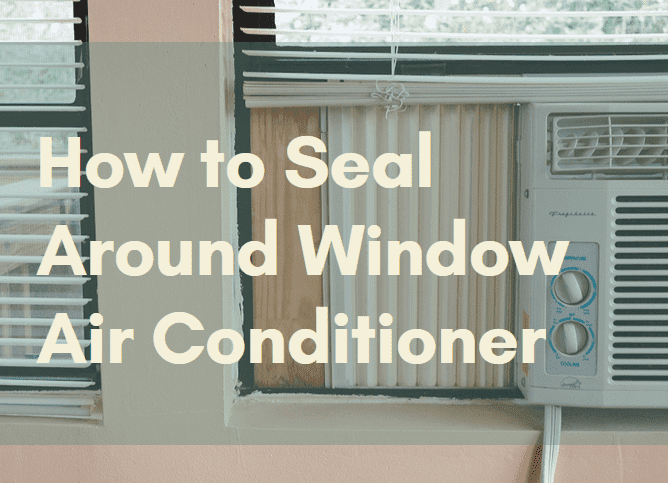Let’s admit that ACs are a great invention that will be perfect for countering a scorching hot summer. But things will go south if something unexpected comes through the gaps of your window air conditioner.
If you find any gaps disclosed around your air conditioner, then it is time to find a way to seal around the window air conditioner. Here are some details to help you.
How to Seal Around Window Air Conditioner
If you have a newly installed air conditioner, it can be a favorite thing since this appliance will let you have fresh air ready to swing inside the room. However, gaps between your window and the AC can waste the power of your AC since the hot air outside can come in through the gaps.
Hence, your AC needs more power to cool down the room.

You can use two items to make the gaps invisible: duct tape or caulking.
- The duct tapes
You know this good old thing. It secures any gaps you can imagine. However, it typically doesn’t work if the gaps are more than one inch wide. So, it is a quick solution only if you have hairline crevices, not a big one that even some creeper bugs can come through.
- Caulking
If you plan to install your window AC for a long time, you may want to caulk the gaps for better closure. This offers a more secure option and a neater gap closure, so you don’t need to worry about insects or other small animals creeping in and entering your house.
Plus, caulking prevents hot air and rainwater from seeping in. Therefore, air conditioner gap filler is a better option than duct tape.
If the window frame is old and needs to be replaced, it can cause an air leak, which decreases the efficiency of the window air conditioning units and makes the air conditioner unit struggle to produce enough cool air for the room.
How to Seal Window Air Conditioner from Bugs
You can do the same to seal around window AC gaps to prevent bugs from coming through. However, the duct tape method is ineffective in closing the gap. That said, it is better to provide caulking than using duct tape.
Read also: Need AC for Room with no Windows?
There are several other methods that you can use to seal your window air conditioner from bugs. The methods are as follows:
- Use screening. If you have just installed a window air conditioner, placing window screening outside it becomes important to block pests. This will block them from coming into the AC. Plus, it can be said that this is the most effective method you can use to seal the window AC from bugs.
- Use cardboard. If your AC unit uses accordion flaps, cut regular cardboard to seal each hole. However, ensure you cover all edges and cracks, even the tiniest part that bugs may use as a ‘port entry’.
Sliding Window Seal for Air Conditioner
What if you have a sliding window? Well, it needs a bit of adjustment in this case. Plus, you need to make sure that you’re OK, even if you can only use one slide window. However, the basics remain the same.
- First, open one slide window and put the window AC onto the preferred place.
- Adjust the slide window and try to discover how much the slide window can move still.
- Now, you can see that above your AC, there will be a space that you can close with a screening. Whatever the material is, it doesn’t matter. Just measure the width and the height of the empty window. Then, prepare a screening with such a size.
- Insert the screening on top of the window AC.
- For the remaining gaps (if any), you can use another kind of gap sealant.
Comparison Table for Sealing Methods
| Method | Effectiveness | Durability | Ease of Application |
|---|---|---|---|
| Duct Tape | Low (Only for small gaps) | Short-term | Easy |
| Caulking | High (For larger gaps) | Long-term | Moderate |
| Screening | High (For bug prevention) | Long-term | Moderate |
| Cardboard | Moderate (For specific use cases) | Short to Mid-term | Easy |
So, those are how to seal around window air conditioner. I hope you find this article helpful for you.





